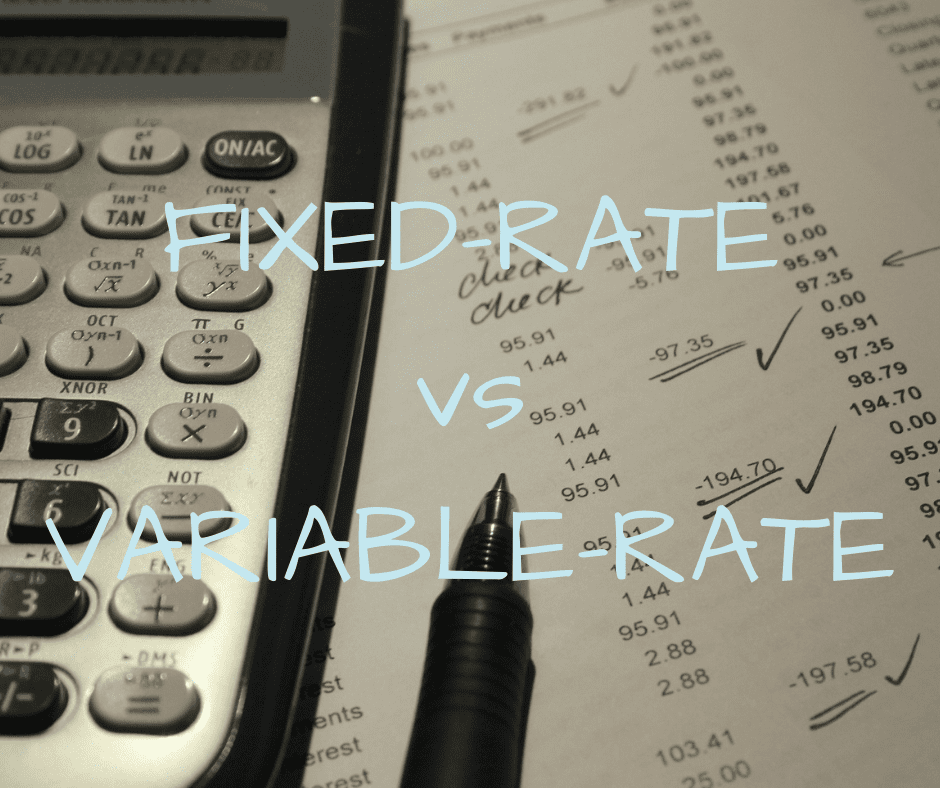
07/01/2022 by Jakub 0 Comments
Fixed rate vs variable rate - market update.
It's been only four months since we have analyzed the differences between the fixed and variable rate mortgage. Nevertheless, the situation on the market changed so rapidly that we have decided to look at the subject once more.
In August 2021, as we mentioned in our previous article, the market was shocked by the monthly inflation rate of 5,4%. Ever since, inflation grew to 8,6% in December, a level last seen 20 years ago. Important to mention, no analyst back in August predicted that this, or anything close to this, might happen.
There are multiple sources of inflation we experience now. Besides the enormous pandemic stimulus or energy market prices soaring - the more fundamental reason lies in the economic doctrine of the ruling party, which we can recap by the growth of social transfers and taxation. Social transfers mean more freshly printed money on the market, mainly used for consumption, which pushes prices to grow. The growth in taxation burden leads to businesses raising their prices to save their profit. The growing prices inspire employees to demand pay-raise, which leads to even more money for consumption available on the market - it's called an inflation-wage spiral.
As it is unlikely that the government would significantly cut the welfare programs or the taxes, the only effective tool left to tackle current inflation remains in hands of the Monetary Policy Council. Raising the base reference rate, as that is the tool meant here, elevates the WIBOR rate proportionally. Higher WIBOR leads to higher lending interest rates, which results in fewer persons/institutions interested in borrowing money from the banks. Also, banks become more strict towards those still interested in borrowing - in short, the credit action goes down, hence less capital comes into the market, and less capital means lower inflation. For those who already have a mortgage or a business loan, as WIBOR shapes their interest rates, the monthly burden goes up, so less money in their budget is left to go to the market - again, less money means lower inflation.
Due to the above, the Monetary Policy Council has started raising the base rate since October and has repeated doing so each month until now, which led to growth from 0,1% to 2,25%. These moves made WIBOR3M grow to 2,62% today (banks apply it differently and with delays, so there will be discrepancies between official WIBOR and banks' internal). The market analysts predict that the rate-hike cycle will end at around 4%, which would suggest we could experience WIBOR3M above 4%. However, the chairman of the National Bank of Poland, and member of the Monetary Policy Council, Mr. Adam Glapinski, stated at a conference on Wednesday, that the rate can grow up to 3% without a negative impact on the economy, and he will recommend one more hike of 0,5%. He also deemed the current inflation rate "transitional".
All of this made the scenario that was unlikely back in August the reality - those who took a mortgage with a fixed rate when its interest was starting at 3%, while flexible back then was starting at 2%, can start counting their savings. Their interest rate will remain 3%, while for a person who took a mortgage while WIBOR3M was at around 0,2%, and with a bank's margin of 1,7% (that was the lowest we could negotiate with the banks back then), the current WIBOR makes the total interest rate of their mortgage at above 4%, and with potential to grow.
Given the above changes on the market, mortgages with fixed-rate are more popular than before. Currently, the market offers the following rates:
- for a fixed-rate mortgage with 10% upfront starting at ~5,7%
- for a variable rate mortgage with 10% upfront starting at ~5%
- for a fixed-rate mortgage with 20% upfront starting at ~5%
- for a variable rate mortgage with 20% upfront starting at ~4,3%
While looking at the predictions of reference rate reaching 4%, and the relative safety that comes with a fixed rate, more and more customers decide to go with this option instead of variable. But only in the future, we will be able to see who made the right decision. The same way we experience an inflation shock today, as the economy is highly volatile since the start of COVID-19, we might experience deflation shock too, and see reference rate going down - no analyst can predict that with certainty.
We hope this explanation gives you a better understanding of how a fixed-rate mortgage in Poland works. For more do not hesitate to ask us: office@loan-brokers.pl.
Best regards,
Loan-brokers.pl Team
Any content provided on this page is to be considered information only. It is not legal advice or a replacement for legal advice. The information posted here by the Loan-brokers.pl team is accurate and current to the best of our knowledge as of the date it is posted, but website users should be aware that laws and their application change frequently, sometimes without notice. You shall be fully responsible for any consequences resulting from your use of the page. Any reliance upon any information shall be at your sole risk.

Comments
Leave a comment